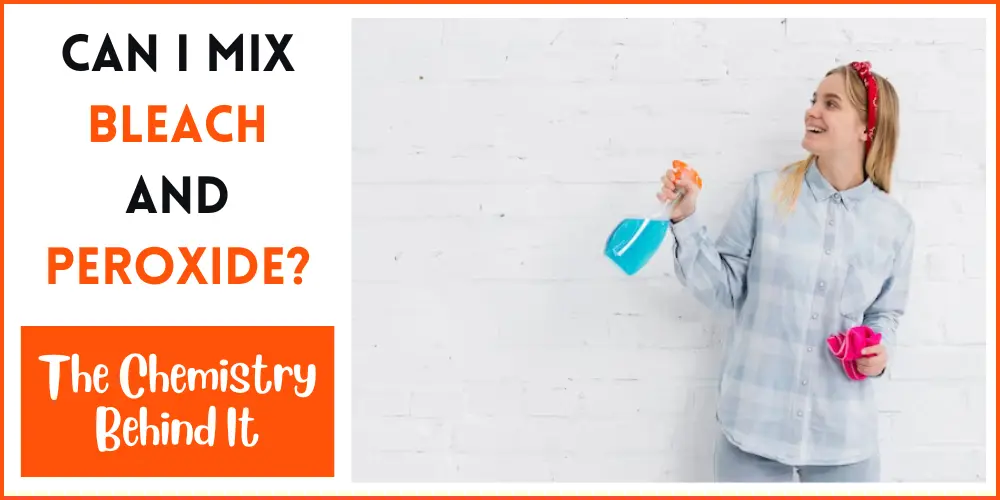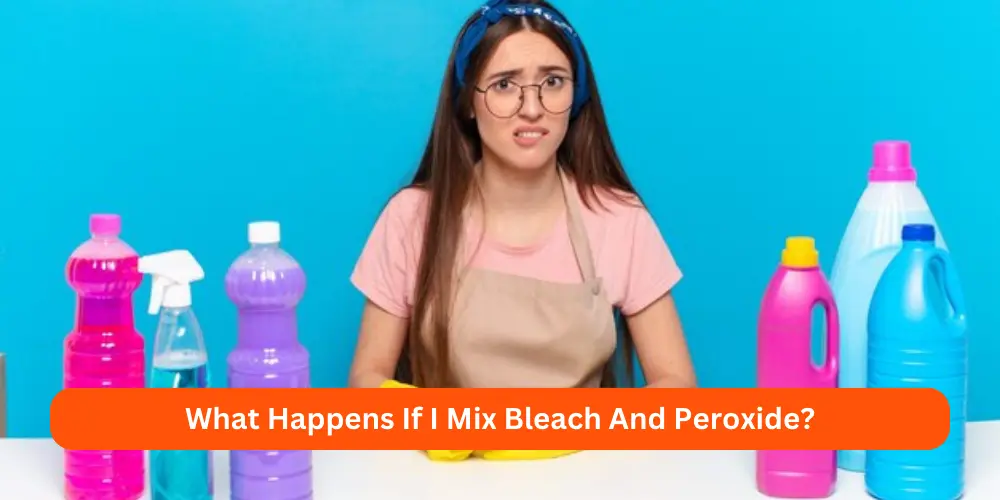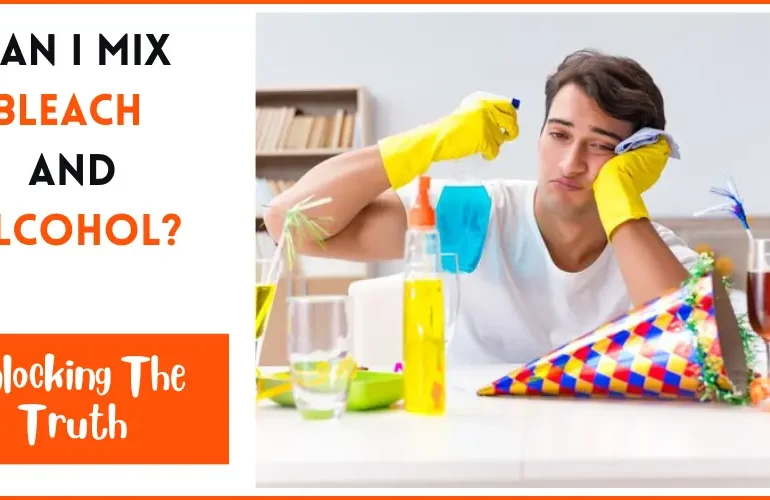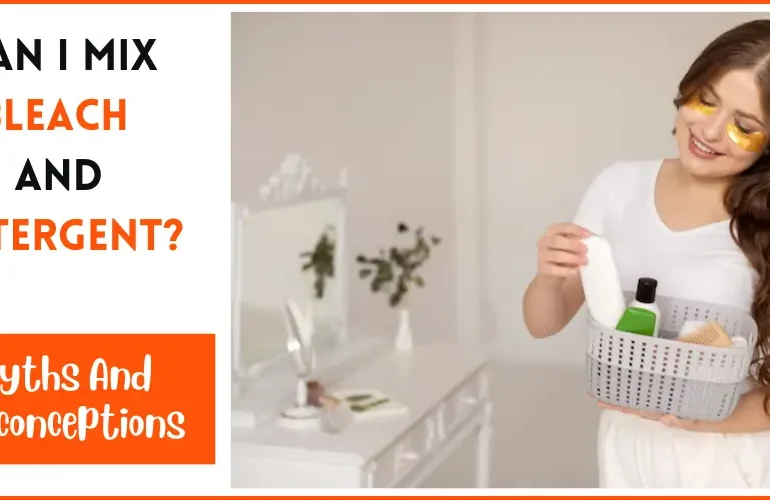
The cleanliness of our homes and surroundings is paramount, especially during these times. As we explore various cleaning methods, one question often arises: “Can I mix bleach and peroxide?” In this article, we will delve into this crucial topic, understanding the risks involved. We’ll also explore safe practices to ensure your well-being and the safety of your environment.
Maintaining a clean and sanitized living space is essential for our health and well-being. Understanding the risks is crucial when mixing certain cleaning agents. It’s important to know the potential dangers involved in such combinations. In this article, we will focus on the combination of bleach and peroxide, shedding light on the risks and offering safe alternatives.
Can I Mix Bleach And Peroxide?
Both bleach and peroxide are powerful cleaning agents, but their combination can lead to hazardous outcomes. The question of whether can i mix bleach and peroxide arises.
No, mixing bleach and peroxide creates a chemical reaction that releases toxic chlorine gas, which can be extremely dangerous and cause respiratory problems. Never mix these two substances under any circumstances.
This is due to the potential chemical reactions that can occur when these substances are combined. It is crucial to clearly understand the risks involved to ensure the safety of yourself and your environment.
Risks And Dangers
Mixing bleach and peroxide can result in the release of toxic gases. These gases, such as chlorine gas, can have severe health implications. Exposure to these gases can cause respiratory issues and eye irritation. In severe cases, it may even result in chemical burns. It is vital to exercise caution and avoid any experimentation with these substances.
Alternatives And Safe Practices
To ensure safe and effective cleaning, it is recommended to use bleach and peroxide separately and avoid mixing them. There are various alternatives available for different cleaning needs. For instance, hydrogen peroxide can be used as an alternative to bleach for disinfecting purposes.
Real-Life Incidents
Numerous incidents have occurred due to the unsafe mixing of bleach and peroxide. By examining these incidents, we can understand the severity of the risks involved. Learning from the experiences of others serves as a valuable reminder to exercise caution and prioritize safety.
Case Studies
Certainly! Below are two hypothetical case studies illustrating the dangers of mixing bleach and peroxide:
Case Study 1: The Bathroom Mishap
- Background: Sarah, a 32-year-old homeowner, decided to deep clean her bathroom over the weekend. She had heard that mixing bleach with other cleaners could enhance its effectiveness, so she grabbed a bottle of bleach and a bottle of hydrogen peroxide from her cleaning supplies.
- Scenario: Sarah poured some bleach into the toilet bowl and then, thinking she could boost its cleaning power, poured hydrogen peroxide on top of it. Almost instantly, she noticed a bubbling reaction and a strong smell emanating from the toilet.
- Outcome: Sarah quickly realized her mistake as the fumes overwhelmed her. She experienced difficulty breathing, coughing, and eye irritation. Panicking, she called emergency services, and paramedics arrived promptly to treat her for chemical exposure. Fortunately, Sarah recovered after receiving medical care, but the incident left her with a newfound awareness of the dangers of mixing household cleaners.
- Lesson Learned: Sarah learned the hard way that mixing bleach and hydrogen peroxide can produce harmful gases like chlorine gas, which can cause respiratory distress and other serious health problems.
Case Study 2: The DIY Disinfectant Experiment
- Background: John, a 45-year-old father of two, was concerned about keeping his family safe during the flu season. Determined to create a potent disinfectant, he searched online for homemade cleaning solutions and found a recipe suggesting a mixture of bleach and hydrogen peroxide.
- Scenario: Armed with this information, John decided to concoct his own disinfectant spray. He measured equal parts bleach and hydrogen peroxide into a spray bottle and vigorously shook the mixture.
- Outcome: As John sprayed the solution onto his kitchen countertops, he noticed a noxious gas emitting from the bottle. Ignoring the warning signs, he continued spraying until he started feeling lightheaded and nauseous. Alarmed, he rushed outside for fresh air and called poison control.
- Lesson Learned: John’s attempt at creating a DIY disinfectant turned into a hazardous situation. Poison control advised him to seek medical attention immediately due to potential exposure to chlorine gas. Fortunately, John recovered fully, but the incident underscored the importance of understanding chemical reactions and the risks associated with mixing household cleaners.
Safe Cleaning Practices
To ensure safe and effective cleaning, it is essential to follow specific guidelines when using bleach or peroxide. Here are some tips to remember:
- Proper Dilution: Always dilute bleach or peroxide according to the instructions provided. Using undiluted solutions can increase the risk of adverse reactions.
- Ventilation: Make sure to have fresh air when you clean by opening windows and doors so that the air can move around.
- Avoid Mixing: Never mix bleach and peroxide or any other cleaning agents unless explicitly instructed to do so by a professional.
Related Guides:
What Happens If I Mix Bleach And Peroxide?

When bleach and peroxide are mixed, a chemical reaction occurs. This reaction releases oxygen gas which can create pressure, leading to an explosion or violent eruption if confined. The mixture can produce harmful byproducts, including chlorine gas and other toxic compounds. It is crucial to avoid mixing these chemicals to prevent potential dangers.
Does Hydrogen Peroxide Cancel Bleach?
Hydrogen peroxide does not cancel out bleach. The two chemicals have different properties and functions. Mixing them can result in a chemical reaction with potentially hazardous consequences. It is best to keep bleach and hydrogen peroxide separate and use them according to their intended purposes.
Can Hydrogen Peroxide Touch Bleach?
It is recommended to keep hydrogen peroxide and bleach separate, even when in contact with each other. Any accidental contact between the two should be cleaned up immediately to prevent any unwanted reactions. It’s essential to handle these chemicals with caution and ensure proper ventilation when using them.
What Not To Mix With Hydrogen Peroxide?
Hydrogen peroxide should not be mixed with other substances. This includes vinegar, ammonia, or acids such as lemon juice. These mixtures can produce harmful gases. This increases the risk of chemical reactions that can damage surfaces, release toxic fumes, or cause harm to individuals.
How Much Peroxide Do I Mix With Bleach?
To ensure safety, it is recommended to avoid mixing peroxide and bleach. Each chemical should be used according to the instructions on their respective containers. If you need to use both substances, it is best to use them in separate applications and never mix them.
Final Thoughts:
Understanding the risks associated with mixing bleach and peroxide is crucial. It helps in maintaining a safe and healthy environment. Discuss if can i mix bleach and peroxide. By following safe cleaning practices and using these substances, you can clean and disinfect your space. This ensures you’re not compromising your well-being. Prioritize safety, exercise caution, and choose alternative cleaning methods when in doubt. Let us create a clean and safe environment while ensuring our own and our loved ones’ health and safety.
Sources:
- By John Paquin, Is it safe to mix bleach and hydrogen peroxide? Posted 5 Years Ago.
- Byu/vampyrcore, Can I use a hydrogen peroxide cleaner after a bleach cleaner? Posted 3 Years Ago.



